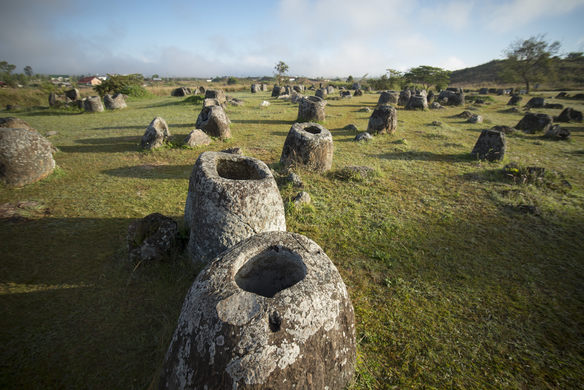
Amazing
Mysteries From Ancient Times That Still Defy Explanation
The devices we use every day would baffle people who lived just 100 years ago, as technology has advanced in leaps and bounds in the modern age. One of the most amazing inventions is the computer, and it has taken over our lives in every area, from our phones to our cars to our kitchen appliances. Anyone can look at a phone to find out almost anything now. Why, then, are there still mysteries from the past? As archaeologists uncover more artifacts and scientists apply modern techniques to their finds, there are more mysteries instead of fewer ones.

Stonehenge
Perhaps the most famous of all the ancient mysteries, Stonehenge is a popular tourist destination for many tourists who visit Great Britain. We know the monument we call Stonehenge was built around 4,000 years ago, but little else. How were the people in ancient times able to move such heavy stones? Why are they lined up the way they are? There are theories ranging from aliens from outer space to pagans using the site for holy rites.

The Loch Ness Monster
There have been tales of a dinosaur in a loch in Scotland as far back as the 7th century. How have so many people seen such a strange creature? What is it? People continue to flock to see the Loch Ness Monster still today.
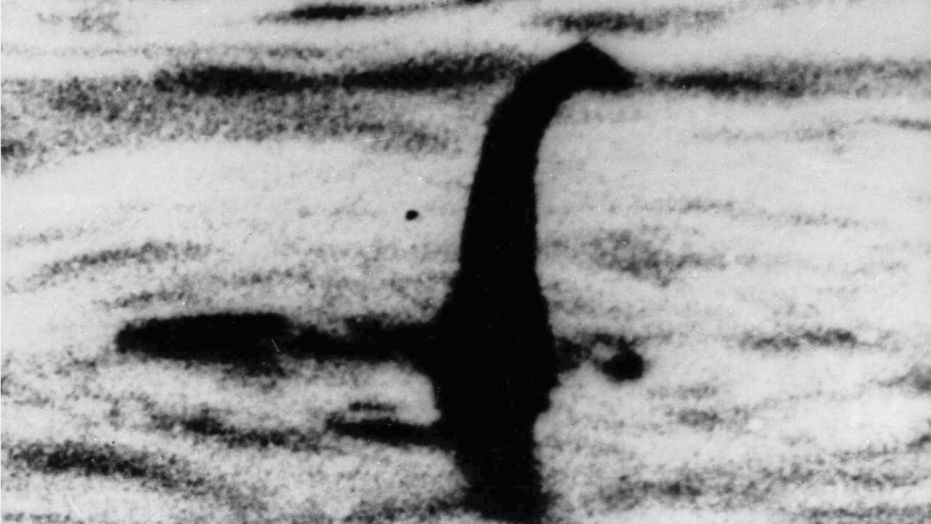
Wiki
The Shroud of Turin
While it seems to simply be a length of cloth, it appears to have the face of a man, and some people believe the Shroud of Turin depicts Jesus and that the shroud is actually his burial shroud. Experts have studied it but not found any definitive answers.

Wiki
The Hidden City of Petra
This once bustling city was believed to have been settled as early as 9,000 BC, becoming the seat of the Nabataean Kingdom in the 4th century BC. Now abandoned, it has become a World Heritage Site destination and people try to learn from the remains.

Wiki
The Lost Ark of the Covenant
A wooden chest which is purported to hold the Ten Commandments, the Ark of the Covenant is an object of reverence to many in the Christian Religion. Stories from around the world make claims that the Ark has been found in many locations, and transported secretly from place to place. The Ark continues to be a subject of intrigue and is sometimes the subject of books or movies.

Wiki
The Fountain of Youth
This spring is supposed to restore the youth of anyone who bathes in it, and there are stories from around the world where people claim to have finally been the ones to find the real Fountain of Youth. Spanish explorer Ponce de León was supposedly told by Native Americans that the Fountain was in a place called Bimini, and there is a park in St. Augustine, Florida, which claims to have been the place where the famous explorer landed.

Wiki
Roman Dodecahedrons
There are more than 100 of these odd 12 sided devices, some of which have been found on sunken ships. Originally thought to be a navigational device of some sort, no one could figure out how they work. One theory is that they are related to religious ceremonies.
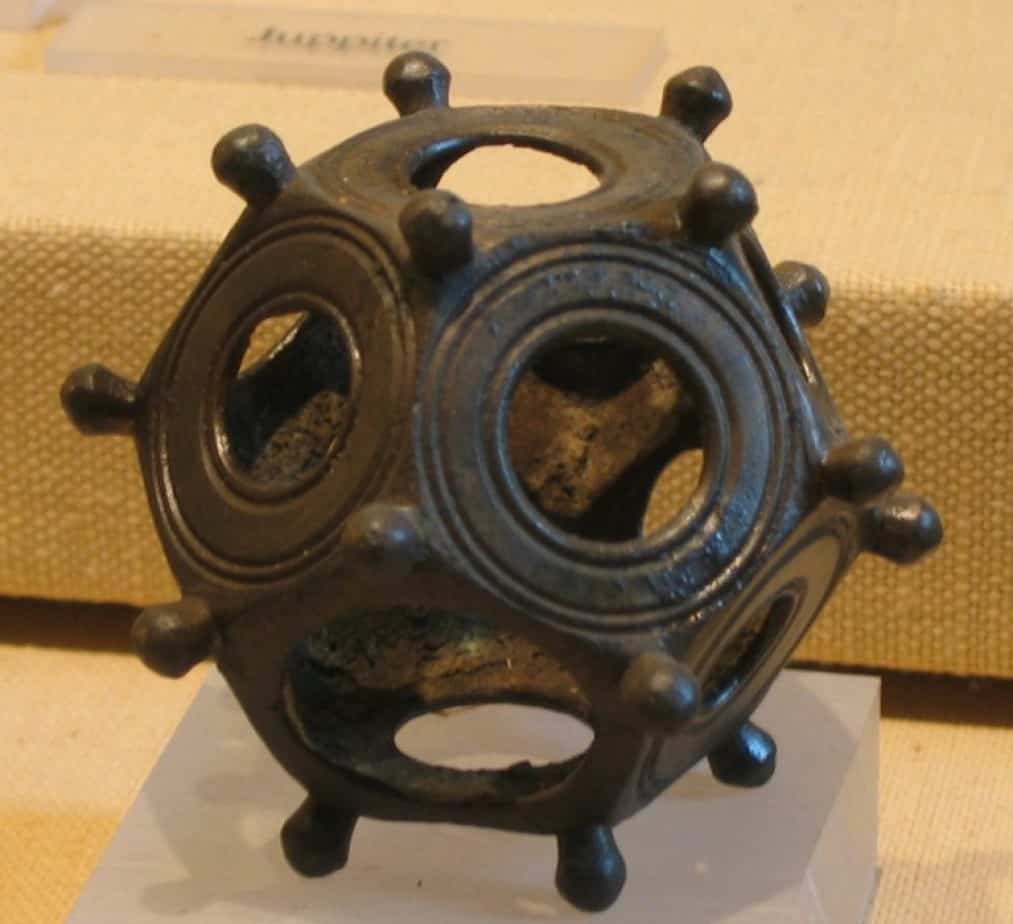
Wiki
Laos’ Plain of Jars
In northern Laos, there are many mysterious jars which are over 2,000 years old. There are possibly 90 different plains which contain the jars, with varying numbers, including one plain containing as many as 400 jars. They are similar enough that they seem to have been created for the same purpose, but there is no way to find out what that purpose was at this time.

Wiki
The Bog Bodies of Northern Europe
People have been finding very well preserved cadavers throughout Northern Europe since the 18th century, but the bodies themselves have been dated back as far as 8,000 BCE. One of the bodies was in such good shape that it was possible to examine his stomach contents. The most mysterious thing, though, is that all of the bodies seem to have been the victim of executions, after which they were placed in the bogs.

Wiki
The Antikythera Mechanism
Known as the world’s first computer, this ancient device was able to use a wind-up system to keep track of astronomical events, like eclipses, the phases of the moon, and where the planets were at different times.
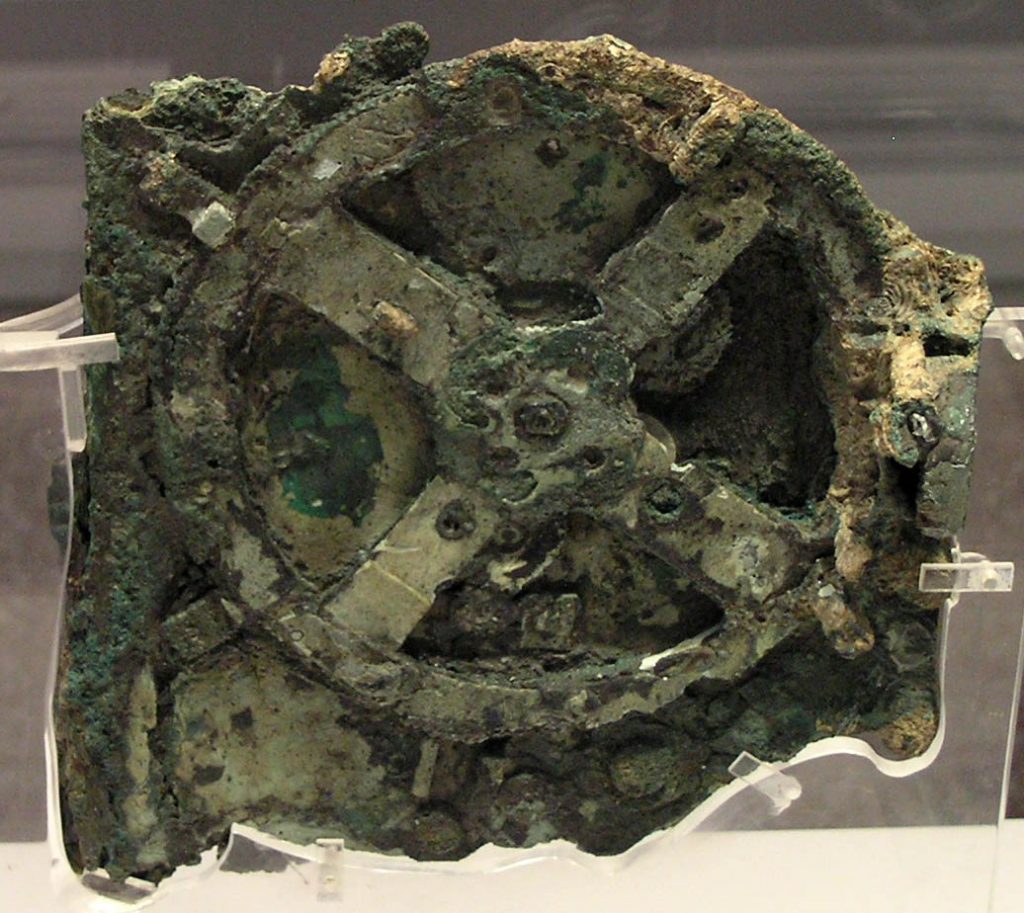
Wiki
The Venus Figurines
So far there have been over 200 Venus figurines found, with different female characteristics on each. Some seem to be pregnant or to have large breasts, while most are missing their hands and feet. Even the name Venus is controversial, as no one knows if the dolls represent women or goddesses.
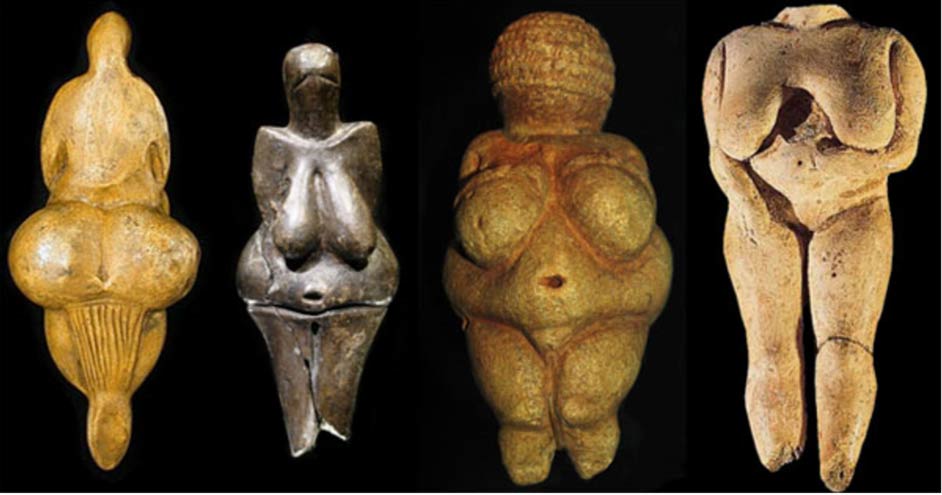
Wiki
Baghdad Batteries
A German archeologist, William Konig, made an odd find in the Middle East in 1838. In the area now known as Iraq, he and his team dug up some clay jars that dated to around 200 BCE. The strange thing was what was inside the jars; each of the jars held an iron rod that was wrapped in a copper cylinder. Based on the materials and design, Konig figured out that the contraptions could be used as batteries. A college professor tried it out and the jars successfully conducted electricity. What was the purpose of these ancient batteries?
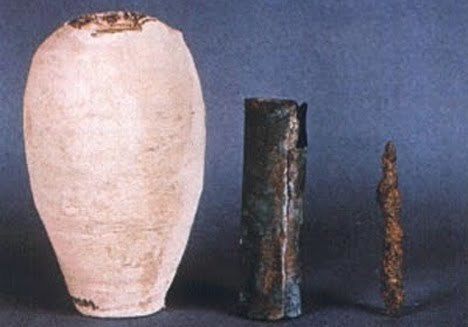
Wiki
Ancient Animal Traps
There is another mystery in the Middle East, where there is a chain of low stone walls crossing across the deserts in Jordan, Egypt, Israel, and other countries. Some of them are up to 40 miles long, and they appear to date as far back as 300 B.C. Long abandoned, there is no one left who can explain who made these formations or why they were abandoned. There is a theory that suggests hunters used the lines of rock as funnels to force their prey into a pit, where they could be dispatched more easily.
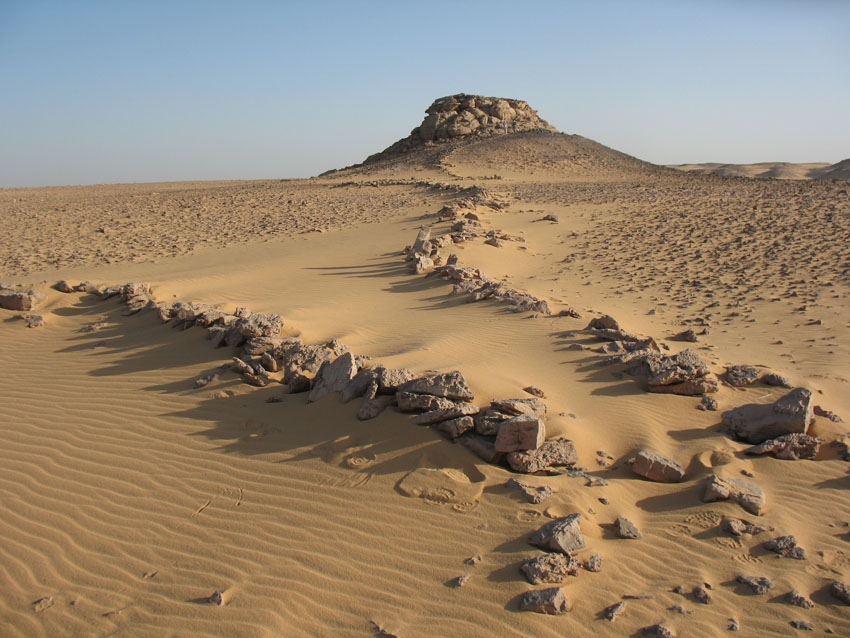
Wiki
Sumerian King List
There is a very old cuneiform clay tablet which seems to be a list of all of the ancient Sumer kings, all the way back to the third millenium BCE. The Sumerian King List would be a very good indicator of some of the most powerful men of that time if the information is legitimate. However, the tablet includes the lengths of time of each king’s reign. Some held power for hundreds or even thousands of years. Why does the Sumerian Kings List hold such unusual information — did other men take over one king’s reign so that the people would believe in the divinity of the kings?

Wiki
The Devil’s Bible
The origins of the book are unknown, but the claim behind the name is that an ancient monk made a deal with the devil in order to meet a deadline. The monk in question was threatened with a terrible death, where he would be walled up alive and left to starve. He agreed to write a single book containing all the knowledge in the world to get out of his punishment, so he made a deal with the Devil himself. This 13th-century book was over 300 pages and has the same handwriting throughout. The book still exists and is so heavy it takes two men to lift it.
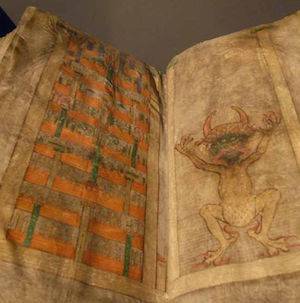
Wiki
Japan’s Atlantis
Just off the coast of Yonaguni Jima, Japan, there exist the ruins of an ancient city believed to be 5,000 years old. Some scientists believe the ruins are simply a natural phenomenon while others believe the site is the city where the Jomon culture was found. Of course, most people think of Atlantis when they hear of a lost underwater city, but the ruins are probably the result of rising sea levels that simply overtook the city in time. The ruins were only discovered in 1995, noting arched entryways and stone staircases.
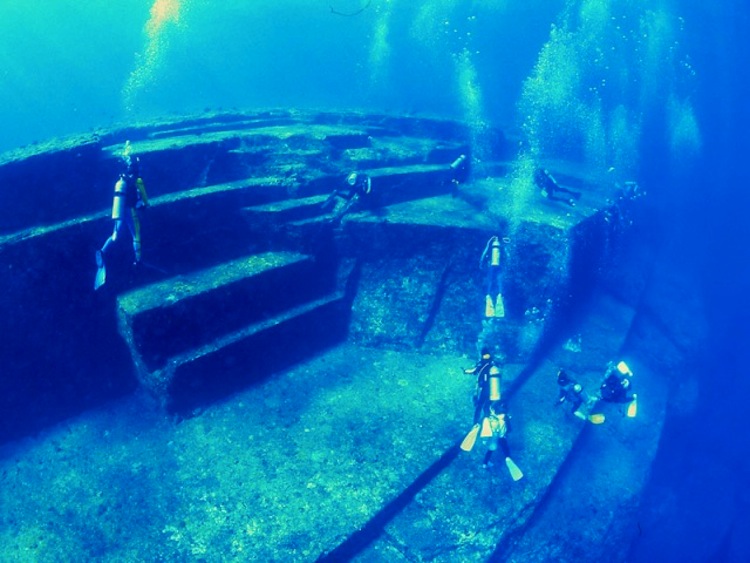
Wiki
Rongorongo Tablet
Everyone has seen the giant stone heads on Easter Island, but there is a greater mystery there. The Rongorongo Tablet was first discovered in 1864 but dates back to around 1200. Instead of letters, there is a series of glyphs which seem to have been carved into wooden planks using a shark tooth. No one has yet been able to translate the language, which is particularly intriguing because it is a language that developed without outside influences.

Wiki
Saksaywaman Fortress Walls
This fortress is so old it predates the Incan empire, although it has not been definitively dated. The stones weigh more than 200 tons and fit together perfectly, as though constructed with modern machinery. The people in the area, which is in Cuzco, Peru, have a legend explaining how the work was done, using a native plant to make the stones lighter and easier to manipulate. The area was probably used as a temple.
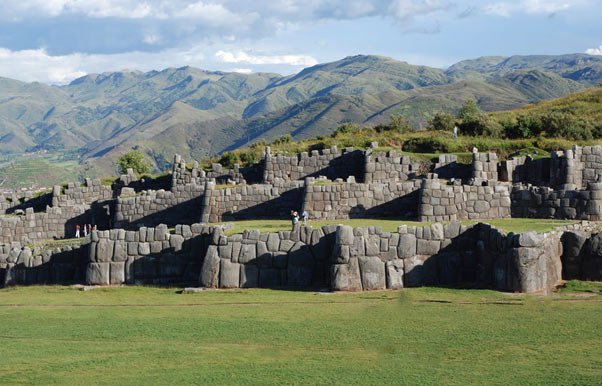
Wiki
The Stone Spheres of Costa Rica
In the Diquis Delta of Costa Rica, ancient stone carvers carved hundreds of giant almost perfectly round spheres. Made of a type of igneous rock, some of the stones weigh as much as 16 tons and span over two meters in diameter. The spheres were lined up toward the home of the current chief, but nobody knows what the purpose of the rocks was. Wealthy landowners keep them in their gardens now, making it impossible to study them.
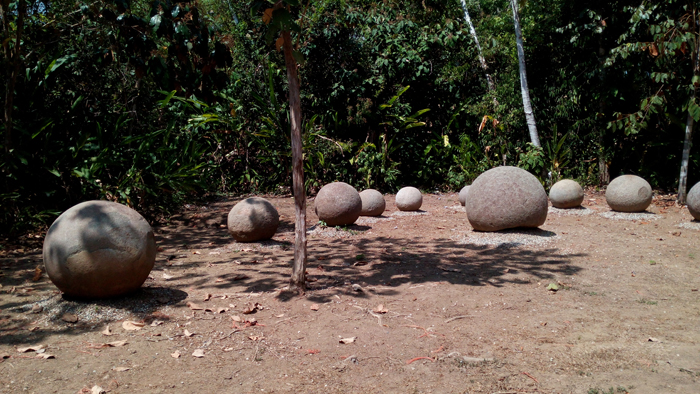
Wiki
Nasca Lines
Found in the dry desert plains of southern Peru, there are many giant images and symbols carved into the hard-packed earth. Called geoglyphs, these were probably made by the Nasca Culture between 500 BCE and 500 CE. There are some designs that look like they could be runways for planes, while others are birds, fish, or even humans. Why were these symbols clearly made to be seen from someone high above long before air travel was even a possibility?
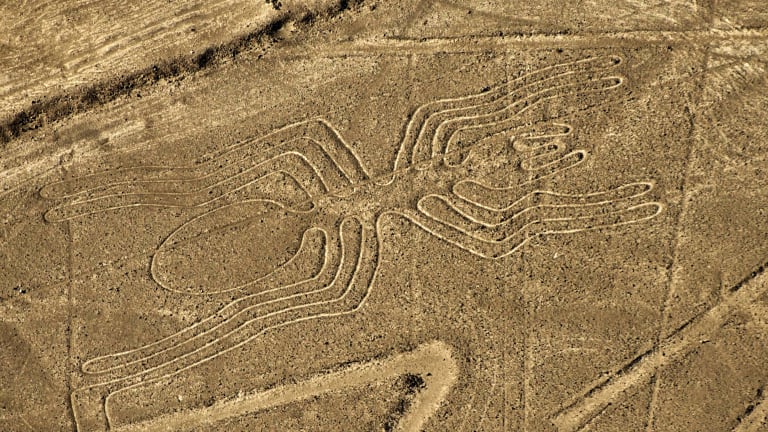
Wiki
The Hellenikon Pyramid
Like the Egyptian pyramids, the Hellenikon Pyramid in Argolis, Greece, is largely a mystery. When was it built? And why? And who built it? Investigators have run across a reference to the Hellenikon Pyramid claiming that it was used as a tomb for soldiers fighting over Argos, but no proof was found to back that up. It may have been built around 2721 BCE, making it older than the Egyptian pyramids.
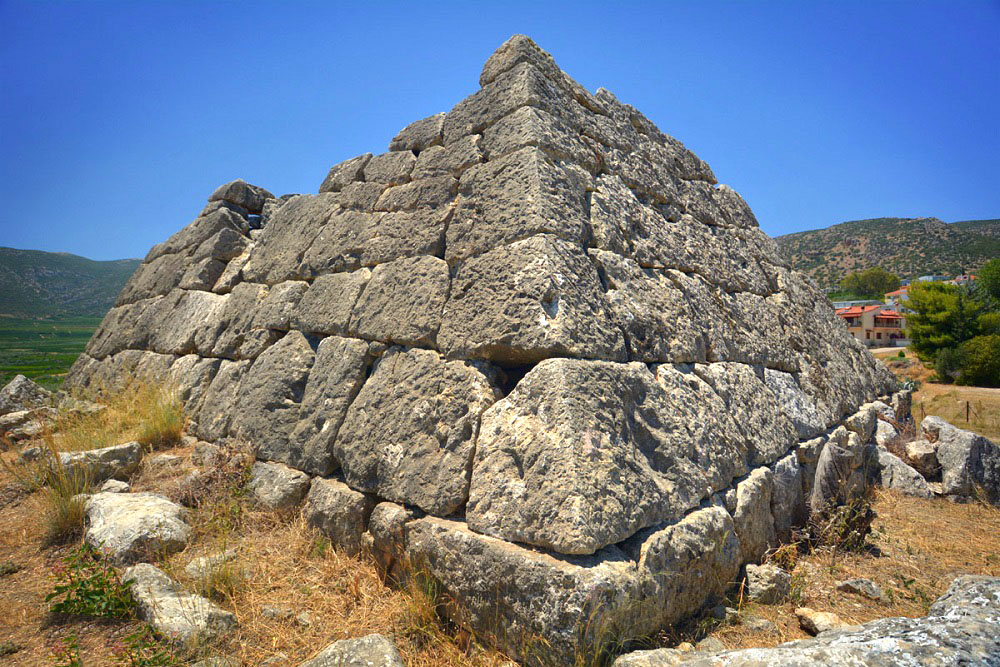
Wiki
The Sajama Lines
The Sajama Lines are etched into the earth, much like the Nasca Lines. The Sajama Lines appear in western Bolivia and appear to intersect each other when seen from far above. Only discovered in 1832, the lines cover 8,700 square miles and are three to ten feet deep. Each line may go for miles. The lines appear to be over 3,000 years old and to have been made by ancient people living by the volcano, but there is no explanation as to why the lines were carved.
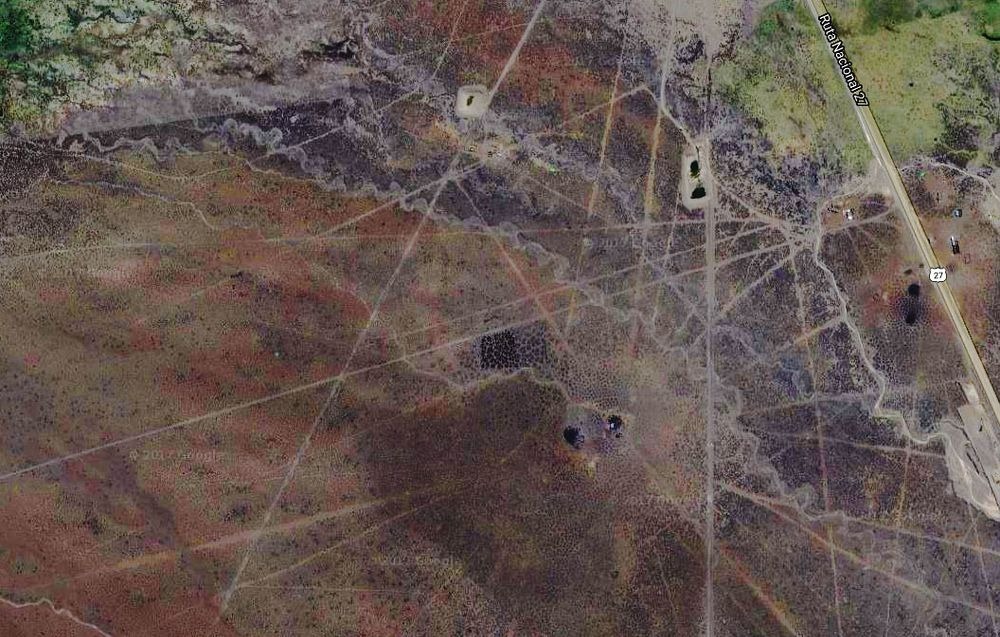
Hypogeum of Hal Saflieni
The only remaining intact example of an underground labyrinth construction in all of Europe, the Hypogeum of Hal Saflieni in Malta was only discovered in 1902. This puzzling labyrinth is believed by experts to have been used from 4000 to 2500 BCE. Though this labyrinth — carved right out of the rock surrounding it — is made up of three levels, one level stands out. One level, which has been labeled as the Oracle Chamber, is an indication that the carvers of this labyrinth actually had advanced knowledge of acoustics. If you were to stand in this chamber and speak at a normal volume, your voice would be amplified a hundred times and reverberate through the entire chamber.
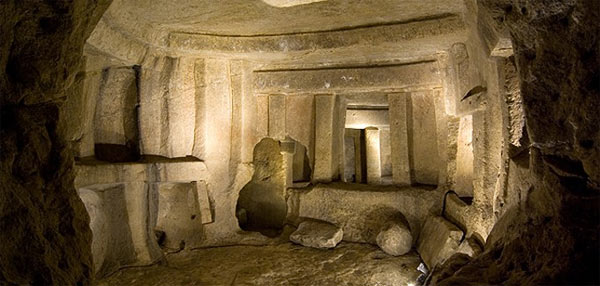
Youtube
Gobekli Tepe
Although Gobekli Tepe in Turkey is thought to be the oldest temple complex ever built by man, dated at 11,000 BCE (an astounding 6,000+ years older than Stonehenge in England), it is also one of the newest finds in the archaeological world; Gobekli Tepe was found in just 2008 by Klaus Schmidt. This temple complex is made up of enormous cared-stone structures, and it helps give scientists a better idea of how societies evolved and how ancient people lived. This find also alludes to the fact that there are even more ancient places and artifacts that are, as of yet, undiscovered and just waiting to be stumbled upon.
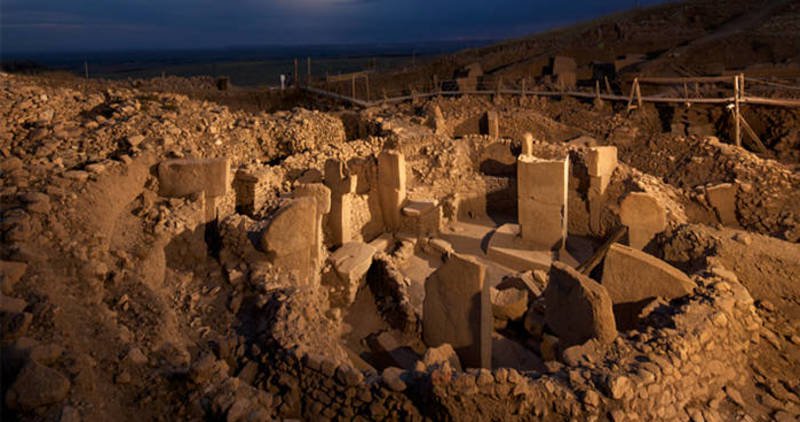
Youtube
Dashka Stone
Found in the town of Bashkorostan, Russia, which is located in the Ural Mountains, the Dashka Stone is a large stone tablet, which weighs more than a ton. The persons who unearthed this large stone tablet first believed that the cracks and lines on the tablet were formed naturally; however, they then discovered that the cracks and lines were meaningful: they created a topographical map of the surrounding area. More puzzling, though, was the fact that the perspective of the map shows the region from above. The tablet has been aged between 3,000 and 120 million years old.
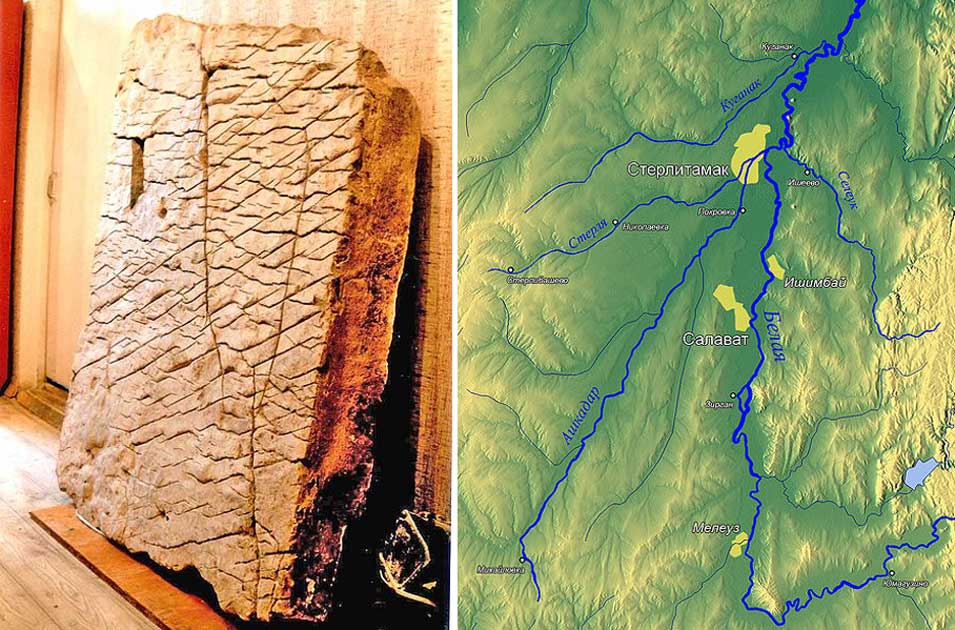
Youtube
Paracas Candelabra
The Paracas Candelabra is also called. the “Candelabra of the Andes.” This mysterious glyph is located on the face of the Paracas Peninsula in Peru and is over 600 feet high. Despite its common name, archaeologists do not really believe that this geoglyph was created to resemble a candelabra. The three-pronged design of this geoglyph more likely resembles a trident — to pay homage to Viracocha, the trident-wielding Incan creator god — or Jimson weed — a hallucinogenic, which was commonly used in religious rituals. Because of other nearby archaeological finds, the Paracas Candelabra is believed to be dated back to around 200 BCE.
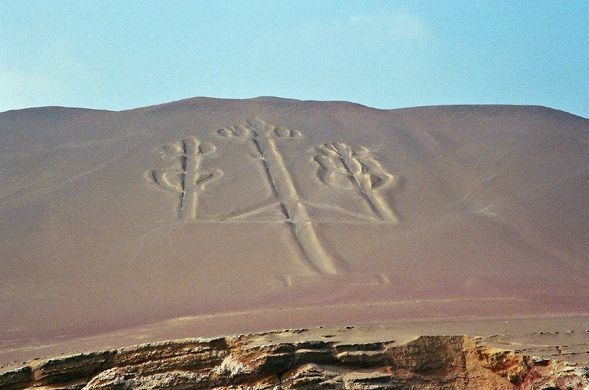
Youtube
Dogu
Dogu are little clay figurines that depict human-animal hybrids, wearing what looks like helmets with goggles on them. They date back to Japan’s Neolithic Jomon period, which means that these clay figurines can be between 2,300 and 10,000 years old. To date, there have been approximately 15,000 of these clay figurines found in Japan. Even though there are so many dogu that have been found, there is no exact explanation for them.

The Big Circles
These huge circles range from 720 to 1,490 feet and are made from stone. Located mainly in Syria, nobody knows the purpose of these 2,000-year-old structures.
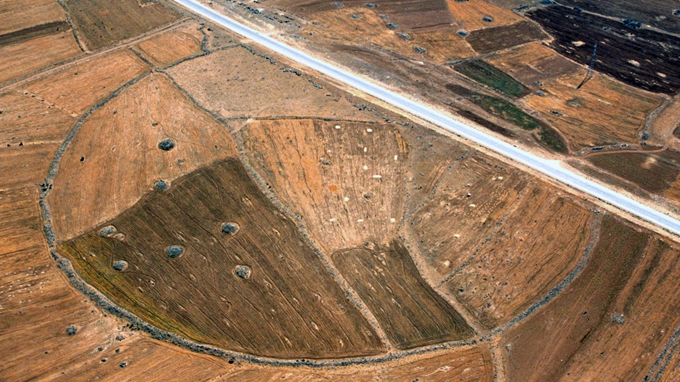
Mount Owen Moa Claw
First discovered in 1986, this ancient claw still has flesh on it and was at first thought to be a dinosaur. It turned out to be a Moa bird, a species extinct for over 3,000 years. How was the claw in such good shape?
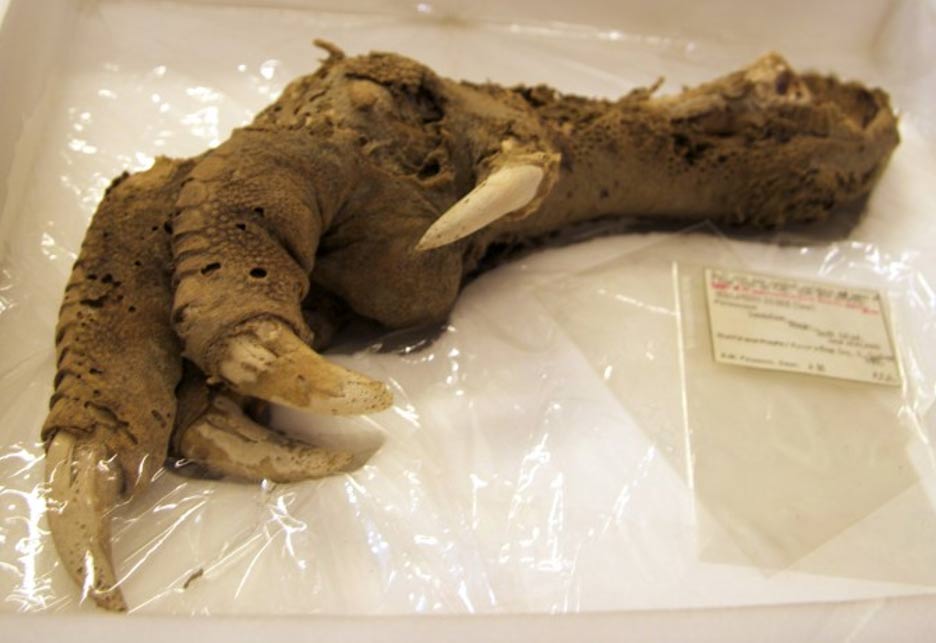
Longyou Caves
These caves appear to have been deliberately carved in sandstone over 2,200 years ago, with some over 100 feet tall. There are carved bridges, pillars, etc throughout the extensive cave system. How was it built, and why?
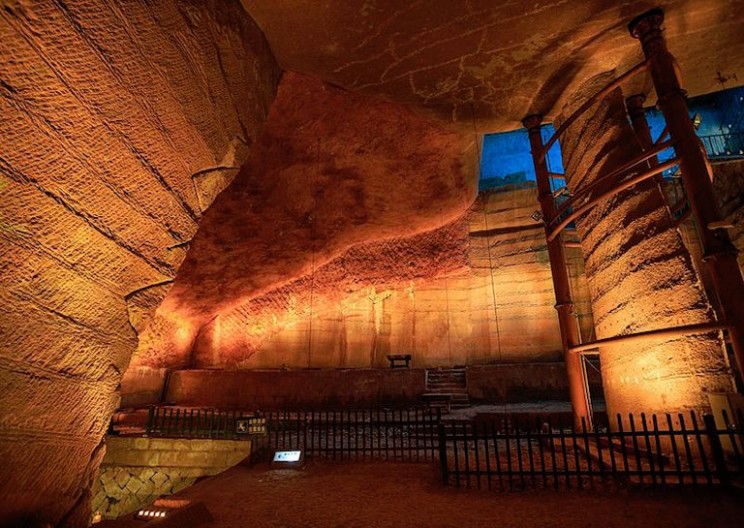
Lady of the Spiked Throne
Dating back to 2700 BC, this strange artifact looks like a boat with the head of a bull and 15 passengers. Nothing like it has been found.
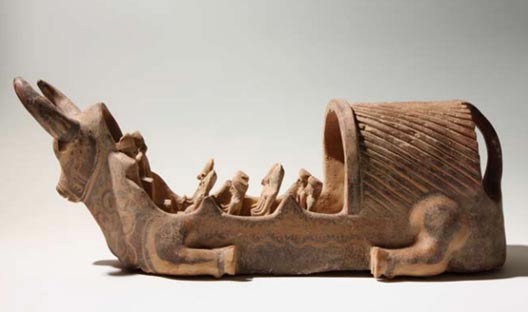
Panxian Cave
These caves are 5,000 feet above sea level and there is evidence people lived in them. The mystery is that there are also bones of very large animals like stegodons and rhinoceros. How did they get up there?
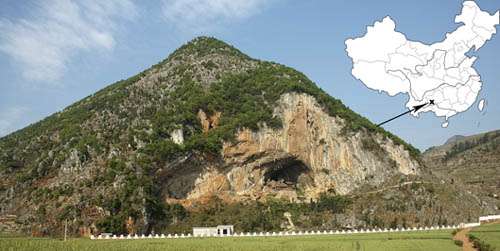
White Shaman Rock
In the southwestern part of Texas lived the ancient Huichol tribe of Native Americans. The Huichol engaged in cave and canyon drawing and, due to their remote location, were able to evade the Europeans, who were settling other areas of the Sierra Madre Mountains, for longer than most other tribes. However, when the Europeans did finally come upon the Huichol tribe, they were astonished at what they saw. Despite never interacting with the previous groups of European settlers, the Huichol created what is known as White Shaman Rock: a rock with a drawing depicting a 24-foot tall white person. This drawing, which was found in the Lower Pecos River Canyon, is estimated to be at least 4,000 years old, which means that is was created long before these white Europeans became known to the people of the Huichol tribe.
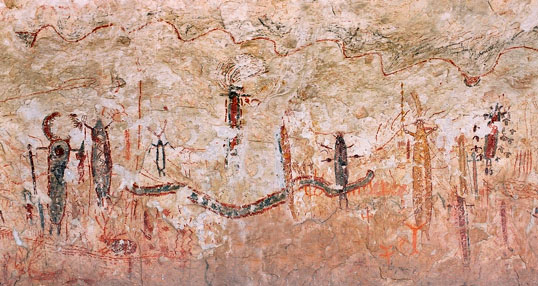
Phaistos Disc
The Phaistos Disc has been surrounded by debate ever since it was first discovered in 1908. The Phaistos Disc is an artifact dating back to some time between 1850 and 1600 BC, which puts it into the time period of the middle to late Minoan Bronze Age. This artifact, a round clay disc, was unearthed on the Greek island of Crete in a Minoan palace called Phaistos. The Phaistos Disc has 241 symbols pressed into it, in a spiral pattern. However, the symbols have not been linked to any written language, and the meaning of the symbols are still unknown.

Dropa Stones
Archeologist Chi Pu Tei and his team discovered the Dropa Stones in the Bayan-Kara-Ula Mountains of China in 1938. They are in fact hundreds of stone discs that look a lot like modern records which play music. They even have a hole in the center and a spiral groove. When examined more closely under a microscope, researchers also saw symbols in the grooves that looked like hieroglyphs. While we may never know what they say, it is believed that these 12,000-year-old artifacts contain information.
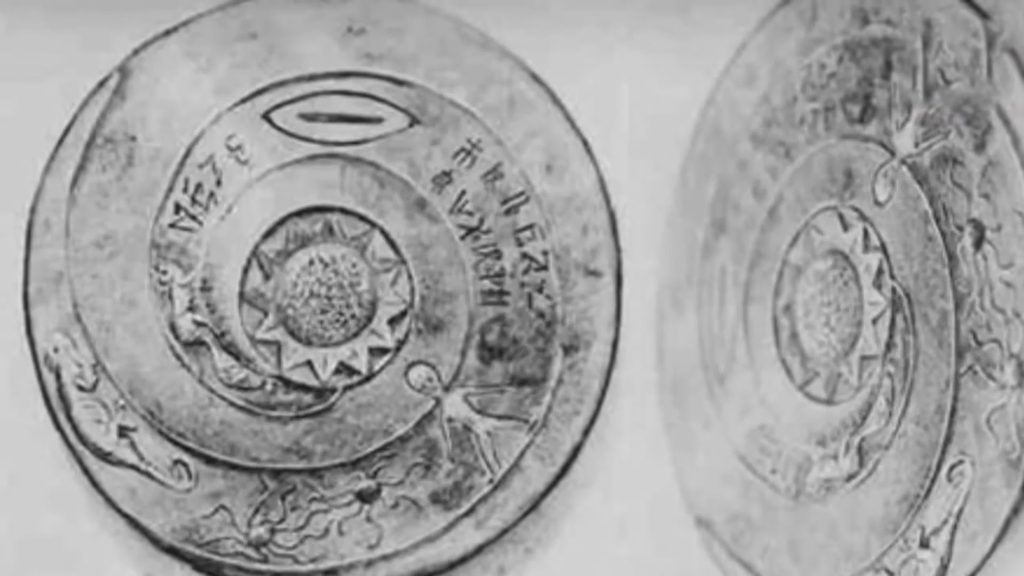
Amazing
Utah Woman Donates Kidney to Man She Met on a Hike

In an inspiring turn of events, a Utah County woman donated her kidney to a man she had only recently met on a hike.
Krissy Miller crossed paths with Shiller Joseph while hiking on Y Mountain, near Brigham Young University, in September 2023. During their chance meeting, Miller, a 49-year-old mother of four, learned that Joseph was in desperate need of a kidney. Without hesitation, she offered one of hers. Following medical tests, it was confirmed that they were a compatible match.
The story took an even more heartwarming turn when, after their initial encounter, Miller presented Joseph with what appeared to be a box of rolls. But inside the box was a sign that revealed her incredible gift — she would be his kidney donor.
On Monday, the pair reunited at Intermountain Health in Murray after a successful transplant surgery. Their emotional meeting came after months of preparation and surgery that gave Joseph, 45, a new chance at life.
Joseph, who has lupus, had been on the kidney transplant waiting list for some time. The average wait time for a kidney transplant in the U.S. is three to five years, with more than 90,000 people currently waiting for a life-saving organ. The National Kidney Foundation estimates that around 20 people die each day while waiting for a transplant, underscoring the critical need for organ donors.
Miller’s decision to donate her kidney without hesitation showcases the profound impact one person can make in the face of overwhelming need. This act of kindness not only saved Joseph’s life but also shines a spotlight on the importance of organ donation.
Amazing
A Young Hero for Hens

Harriet, a 12-year-old from Chart Sutton, Kent, is making a difference in the lives of farm hens. Every Saturday morning, she volunteers with Fresh Start For Hens, a local charity dedicated to finding new homes for commercial egg-laying hens.
These hens, typically 72 weeks old, are often destined for slaughter when their egg production declines. However, Fresh Start For Hens buys them from farms and rehomes them as pets.
At collection points like the one in Aylesford, Harriet helps transfer over 100 hens from farms to their new owners. The charity ensures potential adopters provide suitable living conditions for the hens, requiring photos of coops and runs, along with a minimum donation of £2.75 per bird.
Many of these hens arrive in poor condition, sometimes even bald from stress-induced feather pecking. Harriet explains, “They get quite bored, so they peck each other and rip out their feathers.” Remarkably, after a few weeks in their new homes, most hens regain their feathers.
Harriet’s dedication earned her the BBC Young Reporter award. She hopes her story will inspire more farmers to choose rehoming over slaughter for their hens. As Harriet puts it, “It makes me feel proud that I can do something for these chickens, save their lives and give them to these happy families.”
The charity operates entirely on volunteer efforts. Petrina Thomas, who leads collection mornings, believes they’re all motivated by a simple principle: “the love of hens.”
Amazing
Social Media Miracle: Stranger’s Selfless Act Saves Baby’s Life

Amazing human kindness helped give a six-month-old girl named Helin Dinlera second chance at life. It’s all thanks to the generosity of a stranger who responded to an urgent online plea. Helin, diagnosed with a rare and life-threatening liver condition called Biliary Atresia, faced a grim prognosis without a liver transplant.
When no family members were found to be suitable donors, Helin’s mother, Anna Shushura, turned to social media in a desperate attempt to find help. Her emotional appeal caught the attention of Letty Fenlon, a 27-year-old show jumper from Yorkshire, who felt compelled to act.
Letty, already registered as an organ donor, underwent extensive testing and was confirmed as a match for Helin. Despite the risks associated with major surgery, Letty’s determination to help prevailed. In May, she underwent a six-hour procedure to donate a portion of her liver to the infant.
The transplant was successful, and now, at nine months old, Helin is thriving. While she still requires regular medical check-ups, her progress has been remarkable. Helin’s family expresses immense gratitude towards Letty, whose selfless act has given their daughter a chance at a normal life.
Amazing
Trust and Perseverance: The Remarkable Rescue of Lessie from the Boundary Waters
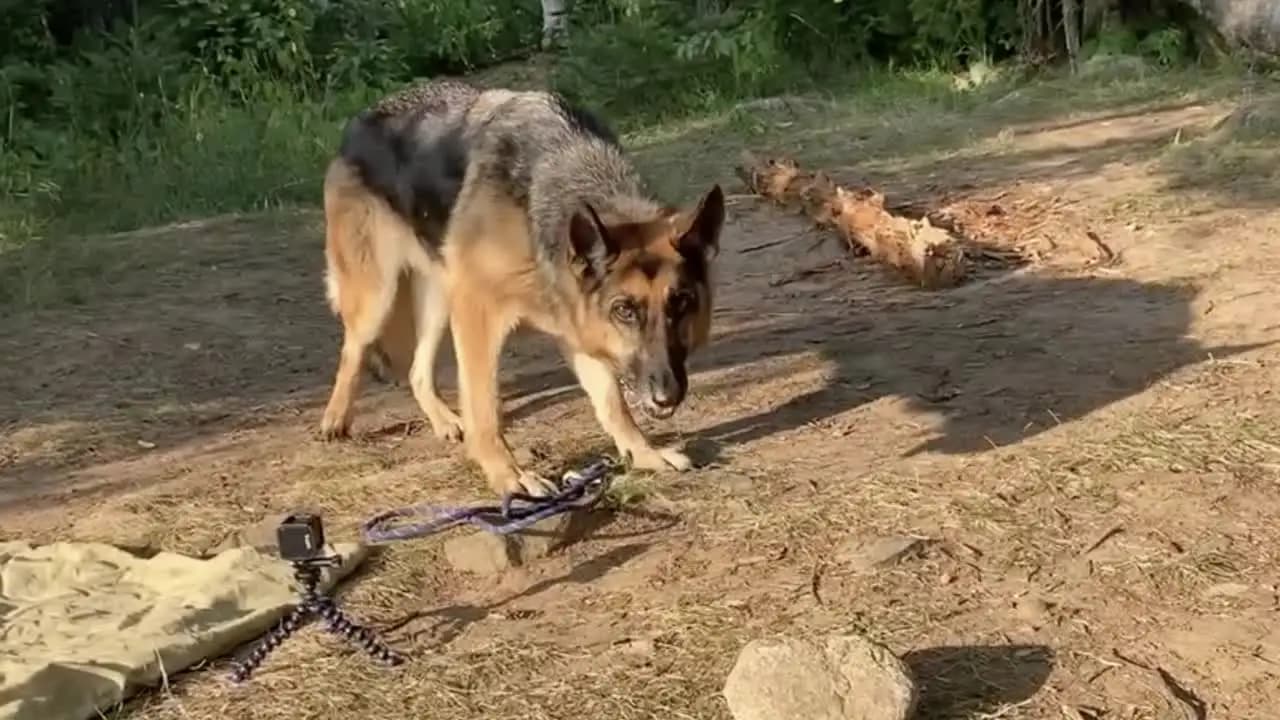
A heartwarming tale of survival and rescue has emerged from Minnesota’s Boundary Waters, where a German Shepherd named Lessie was found after being lost for 55 days. This story highlights the importance of trust-building and community effort in reuniting lost pets with their families.
Lessie’s ordeal began when she escaped following a car accident on the Gunflint Trail near Grand Marais in late June. The Retrievers, a non-profit organization dedicated to finding missing dogs, immediately mobilized to assist in the search.
After a month of uncertainty, hope was rekindled when Lessie was spotted near Ham Lake, miles from the accident site. A Minneapolis-based volunteer, familiar with the area, stepped up to help. Armed with guidance from The Retrievers and his previous experience, he set up camp to search for Lessie.
The volunteer’s patient approach proved crucial. Using food and a trail camera, he gradually gained Lessie’s trust over several days. His persistence paid off when he finally managed to leash Lessie and lead her to safety, facilitating an emotional reunion with her owners.
Jennifer Cadigan of The Retrievers emphasized the intelligence and resilience of dogs, noting that Lessie likely survived on discarded fish remains from nearby campsites. This remarkable story serves as an inspiring reminder to never lose hope when searching for a lost pet.
The successful rescue of Lessie after nearly two months in the wilderness underscores the effectiveness of combining community involvement, expert guidance, and unwavering determination in resolving missing pet cases.
Amazing
Freedom at Last: Charlie the Elephant Begins New Life After Four Decades in Captivity
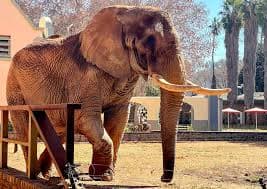
A momentous event in South African wildlife conservation has unfolded with the release of Charlie, the country’s last zoo elephant, into a natural habitat after 40 years of confinement. This historic transition marks the end of an era for elephant captivity in South African zoos and represents a significant victory for animal welfare advocates.
Charlie’s journey began in 1984 when he was taken from Zimbabwe’s Hwange National Park as a two-year-old calf. His life in captivity included years of performing in a circus before being transferred to South Africa’s national zoo in the early 2000s. During his time at the zoo, Charlie reportedly experienced the loss of four fellow elephants, including his own offspring.
The push for Charlie’s release gained momentum in recent years as concerns about his well-being grew. Animal welfare organizations, including the EMS Foundation and Four Paws, played crucial roles in negotiating with the South African government and providing scientific evidence of the detrimental effects of captivity on elephants.
After a tense four-hour journey, Charlie arrived at his new home in the Shambala Private Reserve in Limpopo province. This 10,000-hectare sanctuary, known for its success in reintegrating animals into the wild, now hosts Charlie as he begins his rehabilitation process.
Veterinary and behavioral experts are closely monitoring Charlie’s adaptation to his new environment. Early signs are promising, with reports of Charlie showing excitement upon hearing other elephants and attempting to communicate with them. However, the rehabilitation process is expected to be gradual, allowing Charlie to rediscover his natural instincts and potentially integrate with the reserve’s existing elephant population.
This release not only signifies a new chapter for Charlie but also represents a broader shift towards improved animal welfare practices in South Africa. As the country continues to grapple with challenges facing its wild elephant population, including poaching and habitat loss, Charlie’s story serves as a reminder of the importance of conservation efforts and the ethical treatment of wildlife.
-

 OMG6 years ago
OMG6 years agoA Couple Gave Birth to the Most Beautiful Twins Ever
-

 OMG7 years ago
OMG7 years ago20 Rare Historical Photos
-

 OMG6 years ago
OMG6 years agoHilarious Airport Photos
-

 Cute6 years ago
Cute6 years agoMom Refuses to Let Daughter Eat Sugar and Years Later This is What She Grows Into
-

 OMG6 years ago
OMG6 years agoTop Secret Air Force One Facts That You Never Knew
-
OMG6 years ago
The Funniest Yearbook Photos Of All Time
-

 OMG6 years ago
OMG6 years agoRetired Mathematician Restores Log Cabin
-

 OMG5 years ago
OMG5 years agoWhat Happened When This ‘Duck Dynasty’ Legend Chopped Off His Beard?